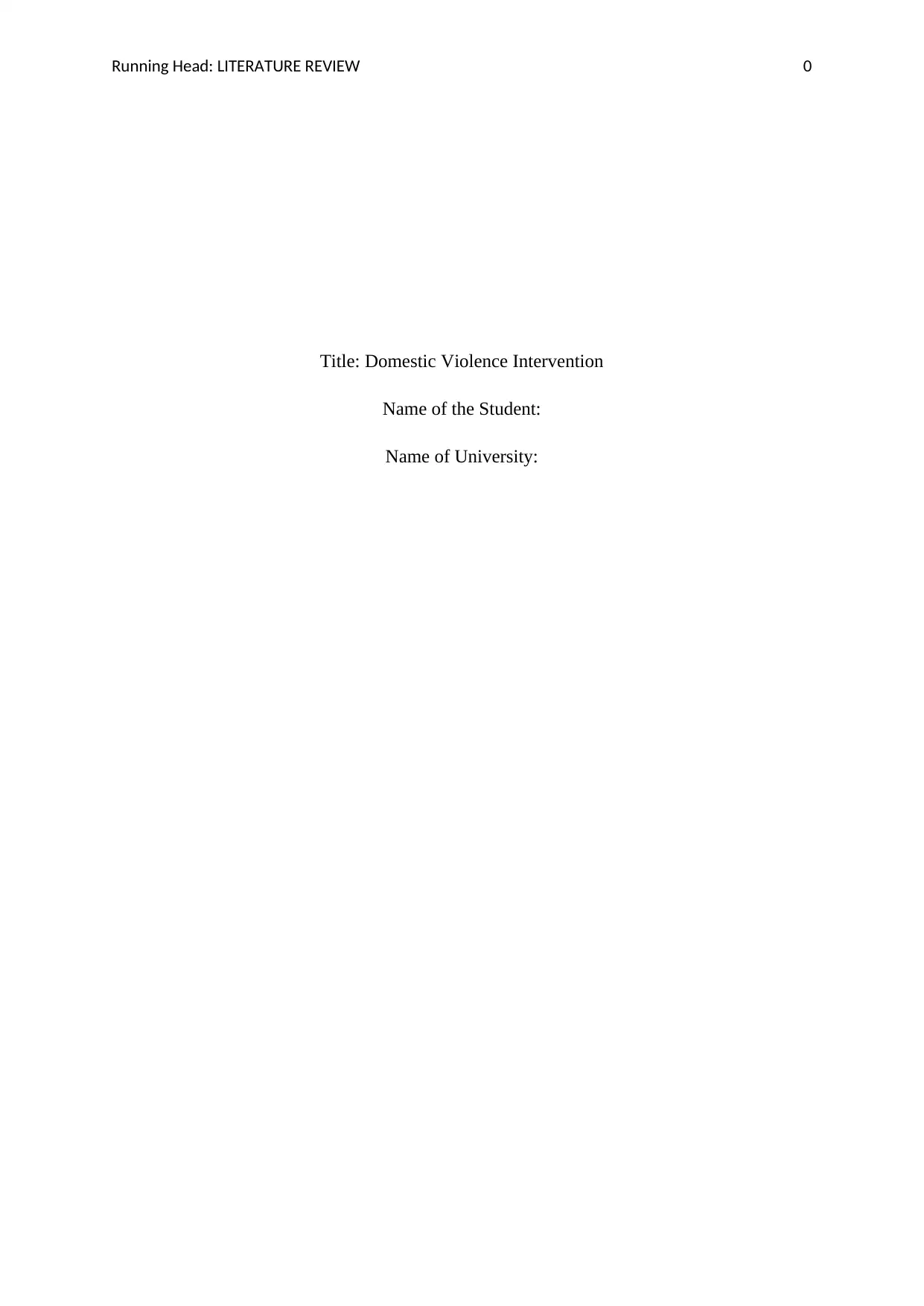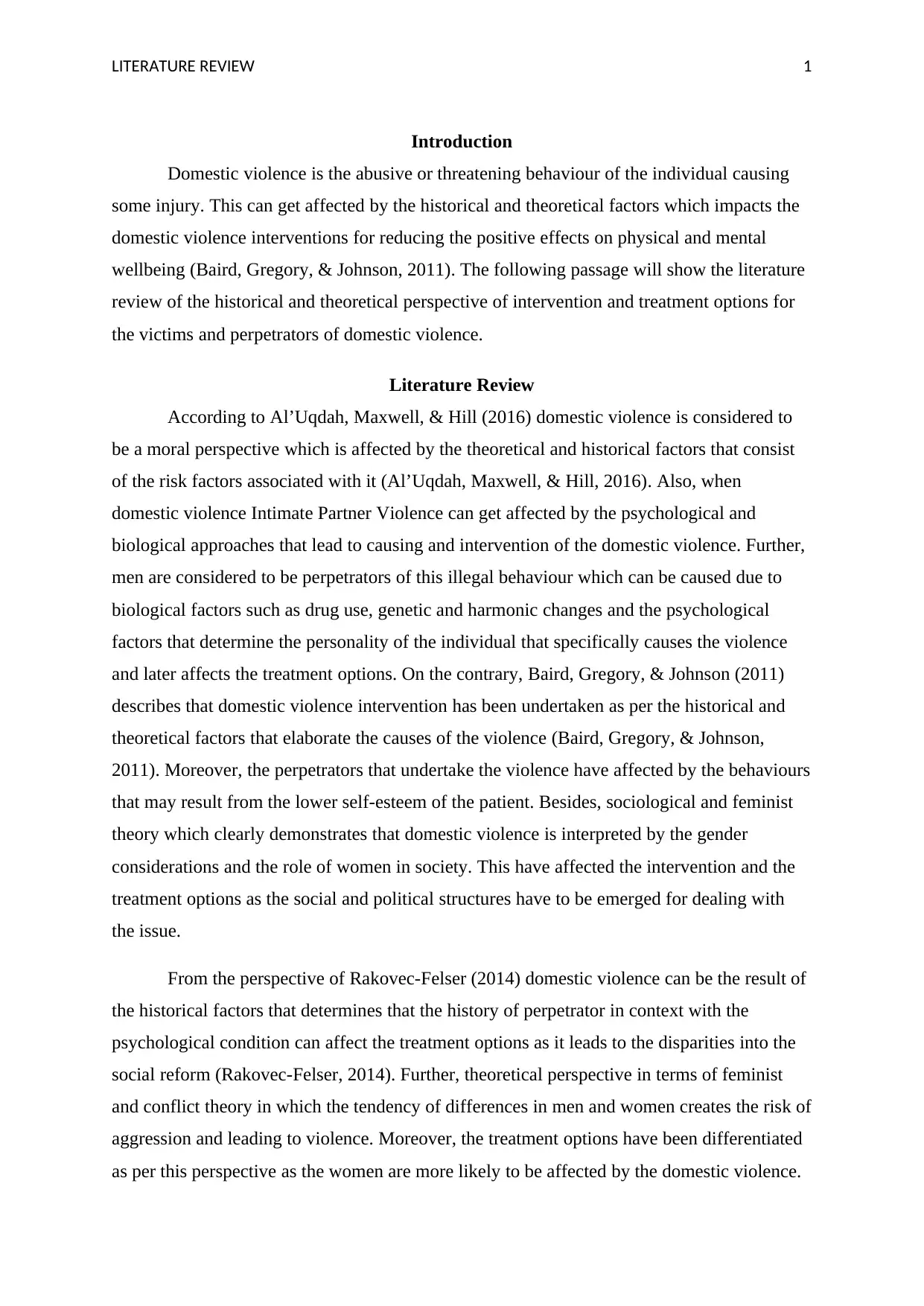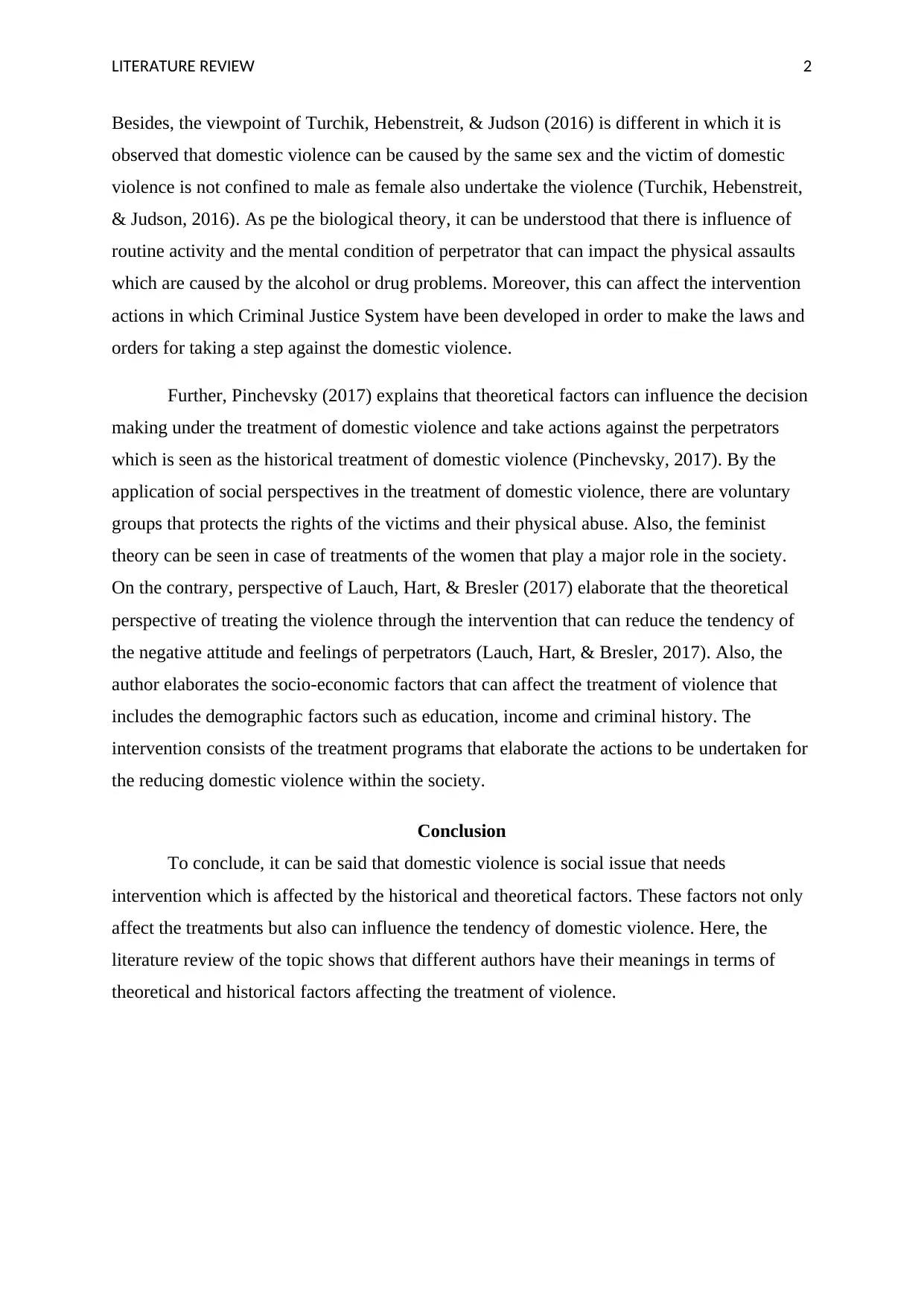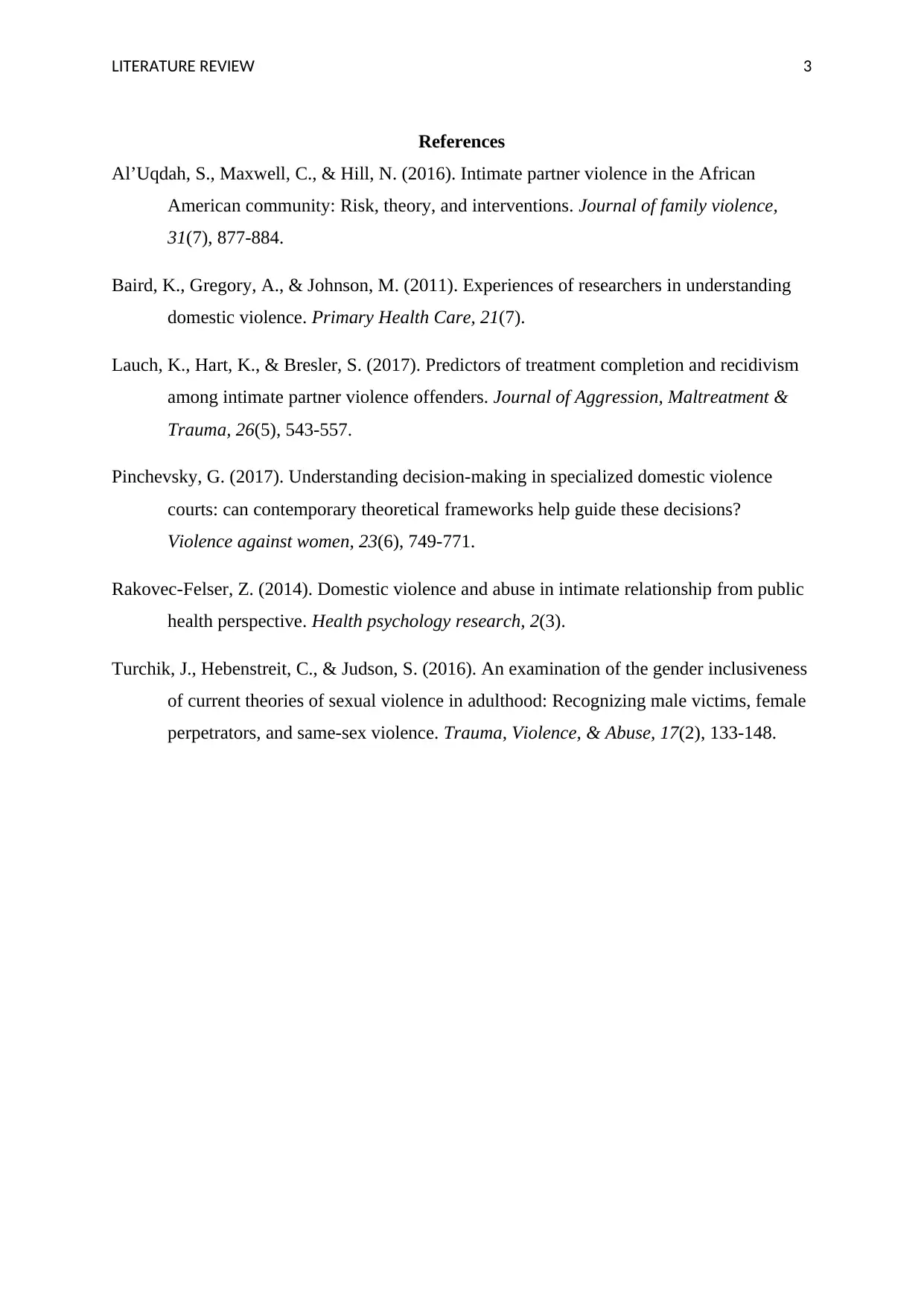Literature Review: Domestic Violence Intervention and Treatment
VerifiedAdded on 2022/08/18
|4
|1114
|12
Literature Review
AI Summary
This literature review examines the influence of historical and theoretical factors on domestic violence intervention and treatment options. The paper analyzes various scholarly articles, exploring how these factors impact the understanding and management of domestic violence. It discusses the perspectives of multiple authors, including Al’Uqdah, Maxwell, & Hill (2016), Baird, Gregory, & Johnson (2011), Rakovec-Felser (2014), Turchik, Hebenstreit, & Judson (2016), Pinchevsky (2017), and Lauch, Hart, & Bresler (2017), who offer insights into the causes, risk factors, and treatment approaches for both victims and perpetrators. The review covers the impact of psychological, biological, sociological, and feminist theories on intervention strategies, highlighting the importance of considering gender, social structures, and individual behaviors in addressing domestic violence. The review concludes by emphasizing that domestic violence is a complex social issue, necessitating interventions informed by a comprehensive understanding of its historical and theoretical underpinnings.
1 out of 4





![[object Object]](/_next/static/media/star-bottom.7253800d.svg)